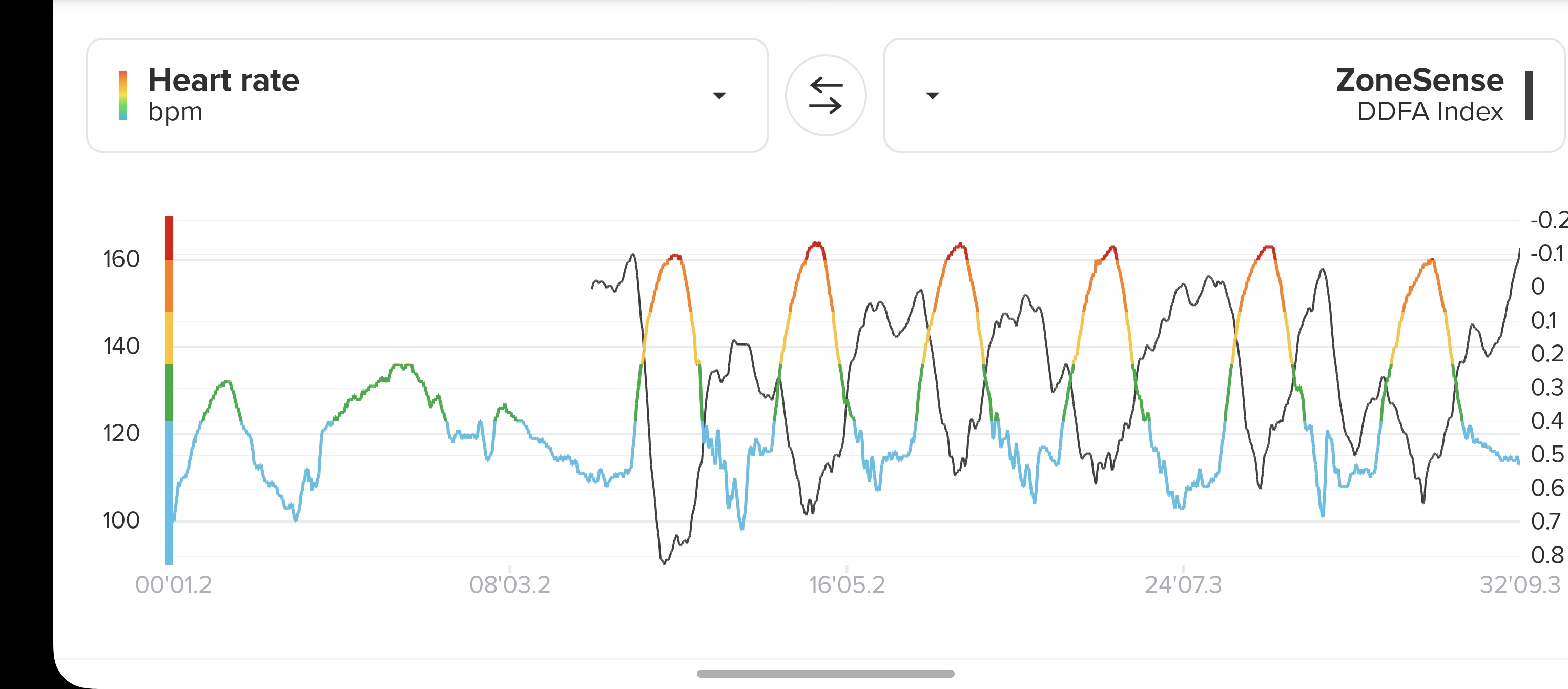Zonesense readings
-
@MKPotts I would also suggest to @Ian-Beveridge to clean the contact points of the strap with some alcohol to remove maybe fat buildup on the strap.
-
@brave_dave You can but I forgot to set my zones in the watch so they were wrong!
These are what I got yesterday (you can see HR zones are wrong). The image below yesterday is from Tuesday interval run where the zones were set correctly (my max HR is 180 and LT mid 160s). I guess another point for this is that I use ZS more for real time information and less for setting zones. In fact, I don’t use HR zones much at all these days. I use ZS for long runs and intervals >10 min, Power for intervals <10 min.
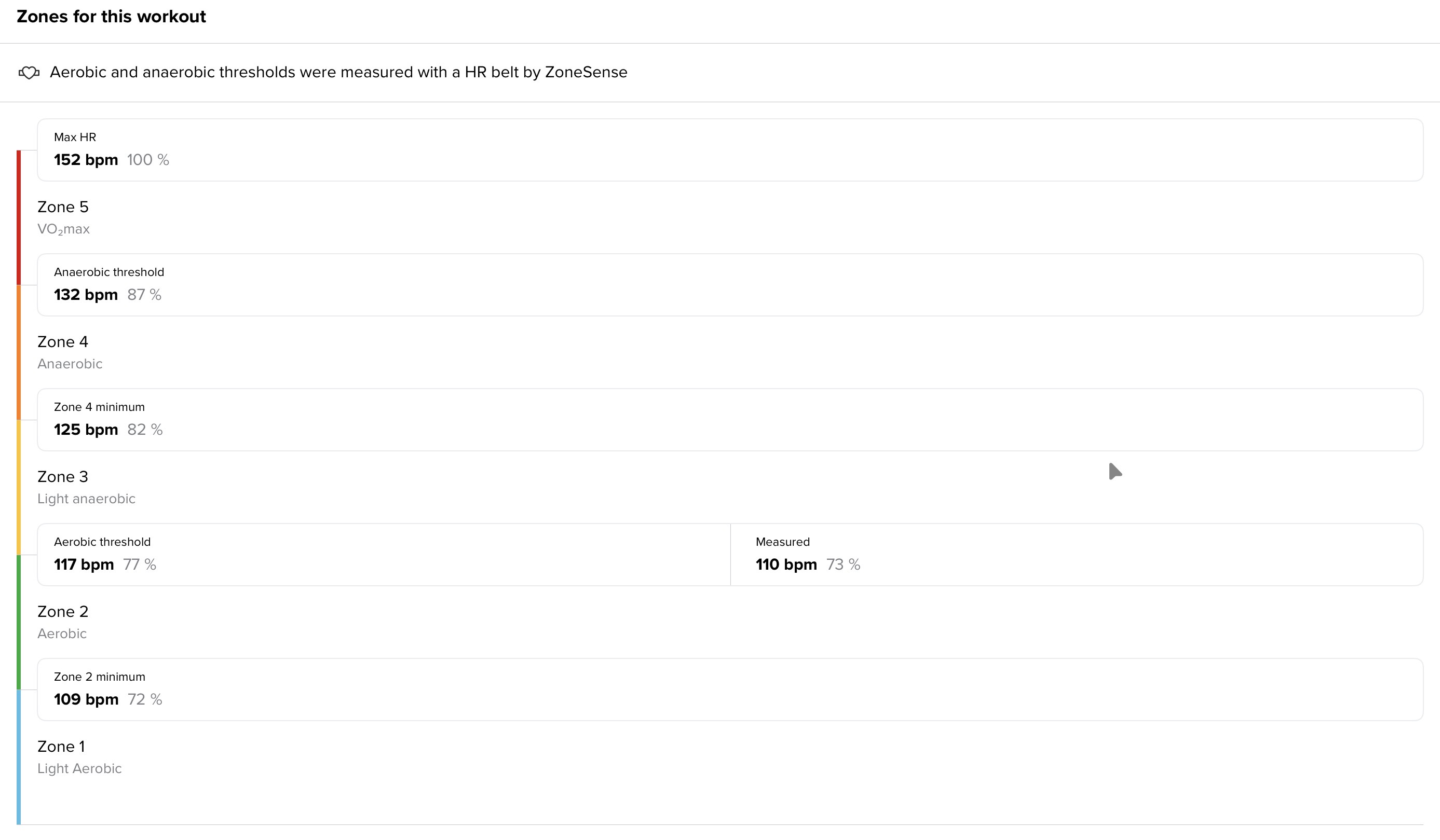
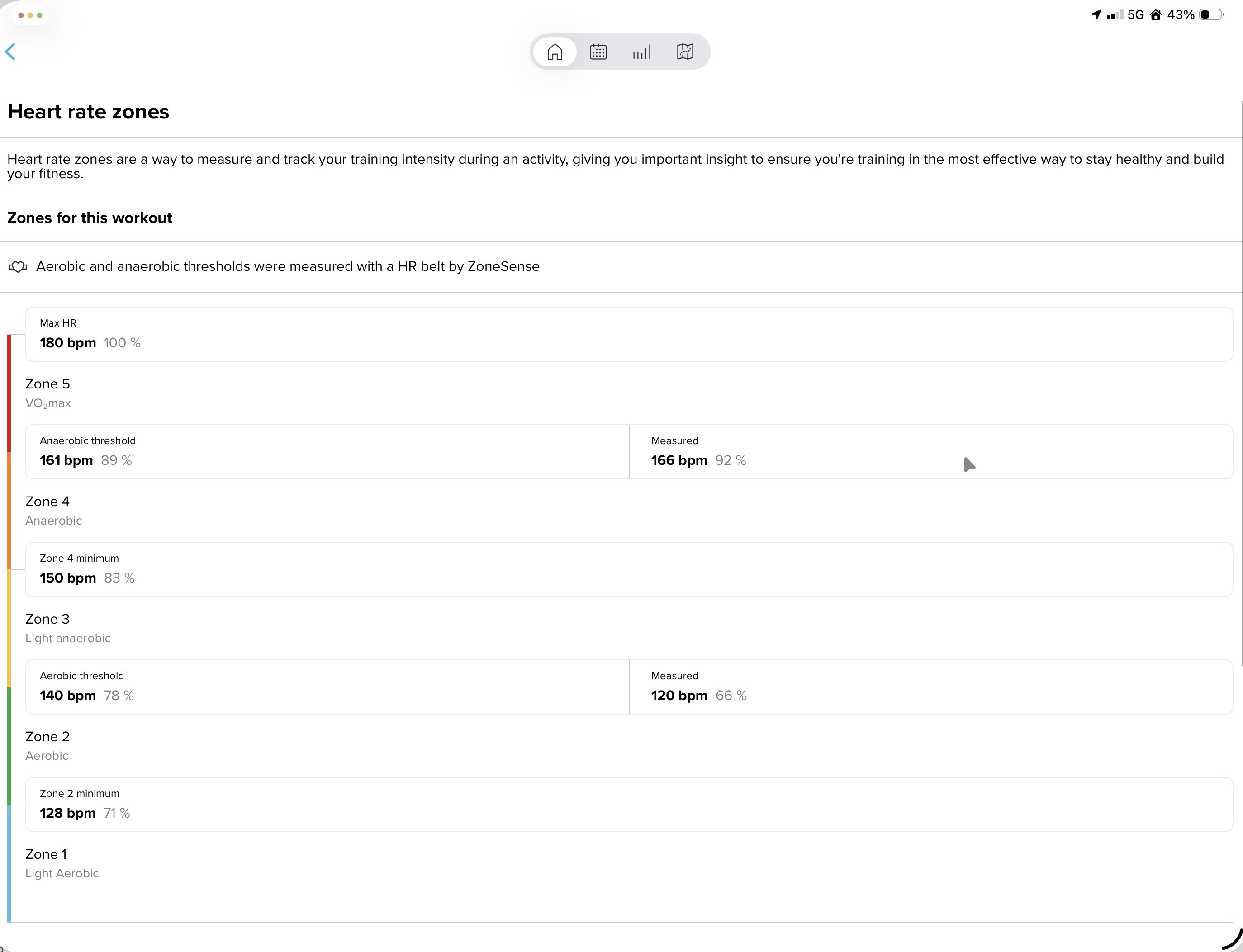
-
@isazi @brave_dave @Brad_Olwin
I might as well just buy a Suunto HR belt if it’s going to spare a lot of grief.Today I tried experimenting and something weird happened. I decided to try the H10+ up high on my chest almost under the armpits with the strap across the upper pectorals. I felt on good form (working on high intensity) and quickly noticed the displayed heart rate wasn’t climbing (due to being warmed up my hr is immediately straight up to 188 to 193 ) but my watch was displaying between 80 and 90 and steadily going lower. after 5 minutes I paused to reposition the strap (autopause active) but that messed up even more - the HR value constantly plummeting.
When I uploaded the data to the phone app it turns out the logged data for the first 5 minutes was logging correct data - around 188 to 193 bpm - and it was only screwed up from after I repositioned the strap.
I loaded onto Runalyze and the anomalies were bad everywhere so I know that placement of the strap is not helping.
Is there any explanation however why the first 5 minutes (before the pause) displayed an incorrect HR real time value but logged a correct value? I’m assuming it’s linked somehow to the other HRV issues (ZoneSense was still deactivated).
-
@Ian-Beveridge This may be H10-specific, I do not have one so others can comment on that. However, I do have a Garmin HRM-Pro (I am traveling so it is not with me now) that I have worn to test ZS. I have had no issues and the HRM-Pro supports two R-R streams at the same time to two different watches (I did test this) and the ZS on both watches was very similar. I can try to look up the data if you like.
-
@Ian-Beveridge I had this happen to me once a few months ago with my Polar H10. Regardless of activity level, the reading was about 60.
I stopped the activity, deleted the sensor from the watch menu, and paired it again. I’ve never had that problem again. -
@maszop Thanks! I’ll do the same - forget/pair. Perhaps a soft reset of the watch too. I’ll also try the advice to clean the contacts with alcohol. Polar advise not washing the H10+ in a machine - just run tap water over the strap - but I think I’m going to use some soap. Oddly enough today was the first time the H10+ has let me down with basic HR data - but I was definitely experimenting!
Is it my imagination or are the users of the Suunto sensor experiencing fewer HRV problems than with the H10+? The Suunto sensor is currently at 26% price reduction on Amazon.fr (59€).
-
@Brad_Olwin Two R-R streams! You’re scaring me now!
If you could only have one strap which one would it be - based on your own experience? -
@Ian-Beveridge the two streams simply mean that you can connect the H10 to two different devices. For example your watch and a bike computer.
For the H10 you have to enable dual BLE connection via the Polar Flow app, if I remember correctly.
For the time being I’d suggest you follow the numerous advice to maintain your belt to find out whether it’s broken. From personal experience I know that belts wear out over time.
-
@Brad_Olwin you don’t need to go for a HRM Pro for this. I have an HRM Dual that can provide one ANT+ and one Bluetooth stream. I used this for some time to compare my experience of the Race S against the Epix Pro…
-
@Ian-Beveridge said in Zonesense readings:
@Brad_Olwin Two R-R streams! You’re scaring me now!
If you could only have one strap which one would it be - based on your own experience?I run long distances (50k to 100 mile) so the only strap that doesn’t chafe is the Suunto. It is small and I like it quite a bit. I am still using the sensor from when I bought an Ambit3Peak. I replace belts about once a year.
-
@2b2bff When I bought the Pro the Dual was not made or for sale I think.
-
@Brad_Olwin I still have my Polar chest strap and watch from 1993. What surprises me today is the exponential acceleration of tech development. I’m going to work on several proposed fixes for the HRV quality from the H10+ - I’ve already unpaired it and re-paired it - done a soft reset on the watch - cleaned the plastic and metal of the strap with 95% alcohol and adjusted the tightness of the strap around my ribcage (but I can still breathe).
If your runs are 50k to 100 miles I assume you are pretty much aerobic all the time. When I remain aerobic on a bike ride or run I’m not getting any of the remaining problems that I’ve been I’ve been getting with the equipment - seems it gets a lot more affected by high intensity work. If working on the strap as described above doesn’t bring results I’ll get a Suunto strap and hope for the best.
-
@Brad_Olwin yeah, for me it’s different. I don’t trust ZS on individual runs/real-time at all but averaging detected thresholds over a lot of runs could be quite accurate at one point, I think. Would like to compare these values with my measured thresholds. But there is no way to get these averaged values from the watch or app, or?
So you mainly do trail running with some hills/mountains?
For calculating TSS this is really challenging, what do you use if you don’t use TSS(hr)? Or do you not use TSS at all?
I originally come from road running where TSS with correctly set HR zones is really good. On long steady efforts it is almost in line with TSS(hr) while it also gives really good results for shorter intervals where TSS(hr) is not that accurate due to the slow responsiveness of the HR.
with correctly set HR zones is really good. On long steady efforts it is almost in line with TSS(hr) while it also gives really good results for shorter intervals where TSS(hr) is not that accurate due to the slow responsiveness of the HR.
Now that I do a lot of trail running recently, I found TSS to be not that good because of the elevation. Think TSS(hr) might be probably best…What is your experience?
to be not that good because of the elevation. Think TSS(hr) might be probably best…What is your experience? -
@Ian-Beveridge I use the same H10 for almost 5 years now and never really had any problems with it. Whether it was Polar, Garmin or now Suunto. Or course, I changed the belt (only the strap, not the transmitter) about every year, as they wear down and then they cause some drop outs under difficult conditions. I know you said your belt is quite new, but maybe your strap is faulty. If you are willing to spend some money for testing, you could try to just order a new strap and see if that solves the issues.
-
@brave_dave Thank you for the “replacement strap” idea - I just realised that I actually have a very new “compatible” strap available that I can run a test with.
I see by using an AI search that the H10 is the most highly rated of the chest sensors in general so I’ll persist in trying to get it to perform.
-
@brave_dave said in Zonesense readings:
@Brad_Olwin yeah, for me it’s different. I don’t trust ZS on individual runs/real-time at all but averaging detected thresholds over a lot of runs could be quite accurate at one point, I think. Would like to compare these values with my measured thresholds. But there is no way to get these averaged values from the watch or app, or?
I do not worry about thresholds anymore……if I did not have to set them on the watch I wouldn’t and would prefer 3 zones set by ZS and updated automatically. When I am fresh my ZS zones match my lab tests….most of the time I am not fresh and I am amazed at how ZS can vary. It matches RPE well for me and is a useful tool.
So you mainly do trail running with some hills/mountains?
Yes, I Iive near Boulder, Colorado and run year round but also ski tour and ski mountaineering in the winter. All my runs except Recovery have a minimum of 300m elevation gain/loss for each hour to 1.5h, sometimes a lot more.
For calculating TSS this is really challenging, what do you use if you don’t use TSS(hr)? Or do you not use TSS at all?
Since TSS(hr) is not that accurate (steep downhill technical terrain or slow uphill technical terrain) I follow suggestions by Uphill Athlete and add 10 TSS for every 300m (1000 feet) of elevation gain AND loss. I then compared this to TSS in Suunto and used TSS(Met). Since TSS(ZoneSense) is now available I have tested and found it to be quite good for me.
I originally come from road running where TSS
 with correctly set HR zones is really good. On long steady efforts it is almost in line with TSS(hr) while it also gives really good results for shorter intervals where TSS(hr) is not that accurate due to the slow responsiveness of the HR.
with correctly set HR zones is really good. On long steady efforts it is almost in line with TSS(hr) while it also gives really good results for shorter intervals where TSS(hr) is not that accurate due to the slow responsiveness of the HR.TSS
 is pretty much useless on our trails.
is pretty much useless on our trails.Now that I do a lot of trail running recently, I found TSS
 to be not that good because of the elevation. Think TSS(hr) might be probably best…What is your experience?
to be not that good because of the elevation. Think TSS(hr) might be probably best…What is your experience?I stated that above, I have used RPE for 15 years now and ZoneSense for me is in line with my RPE except when I have recovery runs where I go too hard and ZS keeps me at the effort I need to.
-
@Brad_Olwin thanks for the insights. Boulder, Colorado is a delightful region! Have been there once.
Yeah, trail running really changes a lot for TSS compared to road running. Impact on cardiovascular system can be quite low while it still can have a high load on muscles, ligaments.
For cycling, I found power to nicely correlated to muscle and cardio load. But the way power is measured in running, it is not really comparable and not really useful.
I might need to have a look at that correction approach. -
@brave_dave I’ve found TSSr to work quite well for my trail runs, I think because Suunto uses NGP rather than average pace. I don’t do anything crazy long, though. My weekly long run is 10-15 miles.
As an example, I had an 8 mile, 1:20’ run with 1,000 feet ascent and descent yesterday. My average HR was right at my Z2/Z3 threshold, with ascents jumping into Z4. Here are the TSS scores for that activity:
TSSr = 89
TSShr = 83
TSSzs = 82
TSSp = 77
TSSmet = 75So TSSr gave the highest score, and, judging from my RPE, the most accurate. I would have scored it right around 90. If I use the Uphill Athlete method (MET + ascent/descent), I get 95, so also a reasonable score.
Maybe TSSr is less reliable on longer efforts, or maybe my zones are just dialed in for trail running, but I’m usually pretty pleased with the calculations.
-
Today I got only Anaerobic TH on same commute. Is that because I spent only a brief moment above the aerobic threshold and a longer period above the anaerobic threshold?
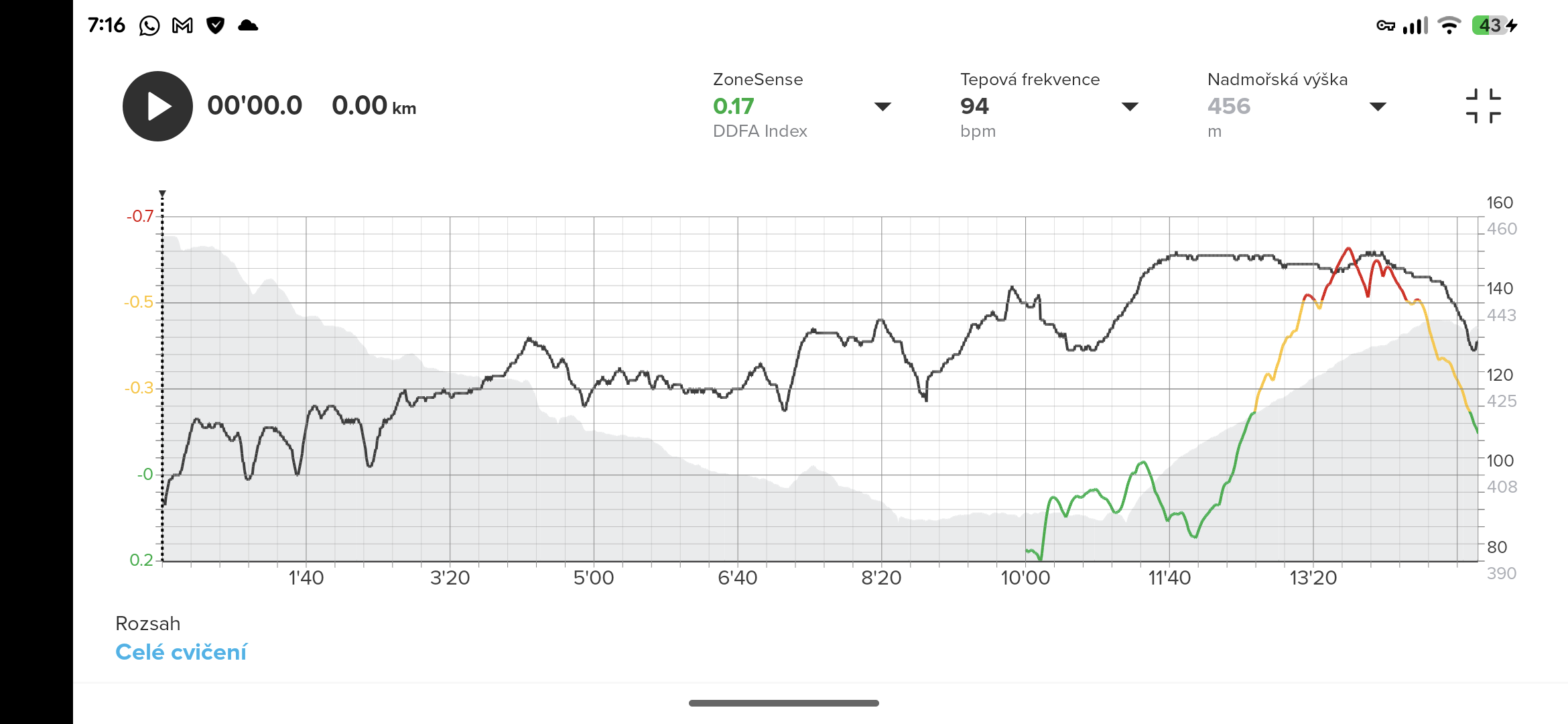
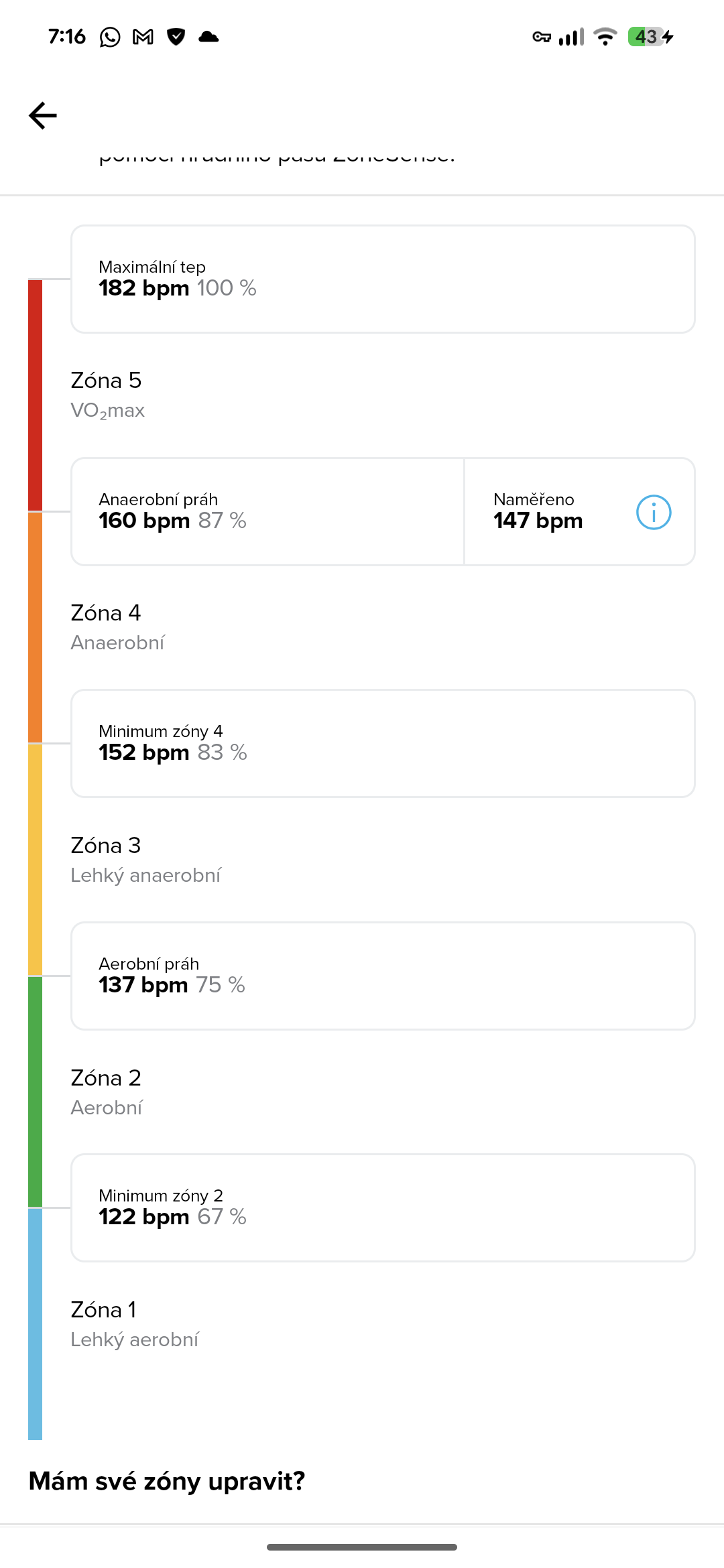
-
@Brad_Olwin @brave_dave
I’ve tried everything suggested so far in attempts to get ZoneSense working for me but it’s not happening. The only thing I haven’t done is to buy another sensor - and I’m not going to do that as My H10+ is only a few months old. I get the impression that people are missing the fact that electrical conductivity in skin changes with age - between the ages of 10 to 70 dropping as much as 60% or 70%. I’m aged 67 and it’s only when pushing high intensity levels for my current fitness level that the ZoneSense degenerates into a mess of HRV artifacts/anomalies. It’s irrelevant that my Suunto app informs me that I have a “fitness age” of 29 - my skin is still 67!
I tried even shaving the hair between my pectorals and lower ribs - dry brushing the skin to remove dead skin and using a commercial electrode gel. Used different straps - impeccably cleaned and tightened - works fine until I hit the accelerator pedal and then it turns into total rat shit.
I get the impression that I need a sensor strap with tiny metal spikes to penetrate the skin - or something like that.Here’s what an AI search dug up…
Skin-mounted electrodes utilizing metalized nano spikes are designed to penetrate the stratum corneum, the outermost layer of the skin, which is typically 10-20 microns thick, to establish low-impedance contact with the conductive tissue in the epidermis.
These nano spikes, approximately 10 microns in length, are sufficient to reach the epidermal layer while avoiding deeper structures like nerve endings and capillaries located 200-300 microns below, thereby minimizing pain and bleeding.
The metalized spikes are integrated onto a flexible, metalized conductive plate attached to an adhesive backing, enabling secure and reliable attachment to the skin without the need for gels, shaving, or skin preparation.
This design facilitates effective transmission of biopotentials such as ECG signals and allows for long-term monitoring, including use as a smart patch for wireless data transfer from implanted medical devices.
